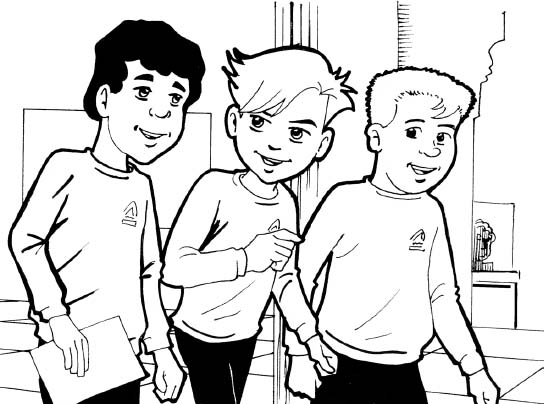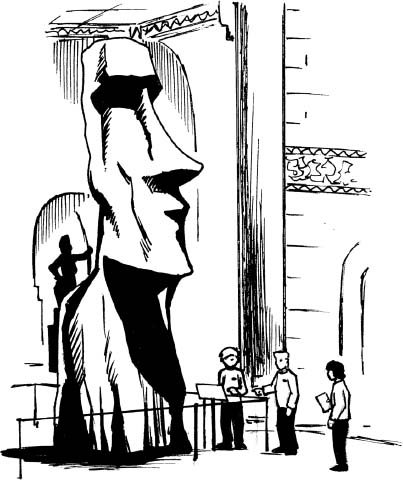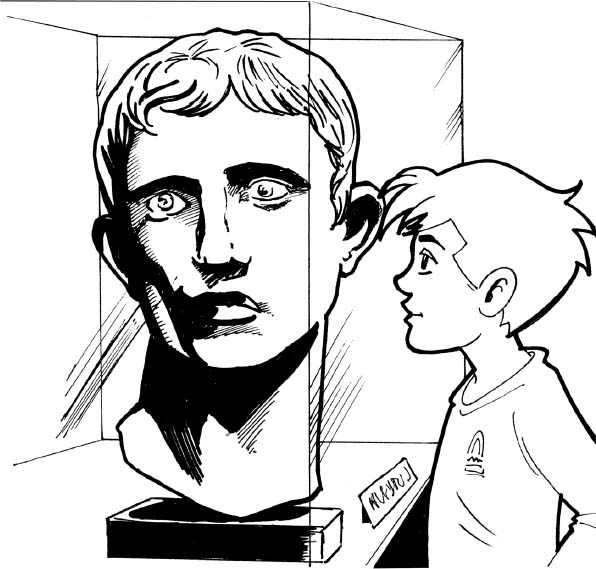

It was a Friday afternoon and Jack Stalwart was standing with his Fourth Grade class in the lobby of the British Museum in London. Not only did the British Museum hold more than one million artifacts from the ancient world, it didn’t cost a thing to visit. Jack and his classmates were on a field trip studying its treasures.
‘OK, everyone,’ said Jack’s history teacher, Mr Marshall. He was handing out pieces of paper to each pupil. ‘The curator of the museum has arranged a treasure hunt for us.’
The students cheered and clapped.
‘We’re going to split you into six teams,’ he said. ‘The first team to find all thirteen objects wins a prize.’
Mr Marshall organized his class into groups of three. Luckily for Jack, he was paired up with two of the cleverest pupils in the class, his best friends Richard and Charlie.

‘Let’s crush ’em,’ said Richard.
‘Yeah,’ said Charlie. ‘They don’t stand a chance.’
Mr Marshall looked at his watch. ‘Time starts’– he said as he waited for the second hand to pass the twelve– ‘now!’
Jack, Richard and Charlie quickly looked at the first clue on the paper:
A VALUABLE KEY IN DECIPHERING EGYPTIAN HIEROGLYPHIC WRITING CAN BE FOUND IN ROOM 4. WHAT IS IT CALLED?
‘I know,’ whispered Charlie, so the other teams couldn’t hear. ‘It’s the Rosetta Stone.’
Not having to find Room 4 saved them some time. Jack scribbled the answer in the space next to question one. The second clue, however, was much harder.
WHICH ISLAND IS FAMOUS FOR ITS STONE STATUES CALLED ‘MOAI’? YOU CAN FIND THE ANSWER IN ROOM 24.
Jack, Richard and Charlie looked at each other blankly. According to the map, Room 24 was down the corridor ahead, next to the bookshop. They raced for it, and when they got there, they saw an enormous stone statue with the face of a man. Underneath it was a sign that said:
HOA HAKANANAI’A
STATUE FROM EASTER ISLAND

Richard noted the name ‘Easter’ in the blank next to question two. Charlie read question three out loud:
IN 31 BC THIS EMPEROR CAPTURED EGYPT FOR THE ROMANS. WHO WAS HE? VISIT ROOM 70 TO FIND OUT.
Unfortunately Jack didn’t know much about Greek or Roman history. The junior crime-fighting agency that Jack worked for, the GPF, had taught him many things, but most of it was practical stuff, like how to stop a bad guy from coming at you with a poison pen. He shrugged his shoulders at his friends and took the lead, climbing the stairs to the upper floor.
When the boys got to Room 70, they found themselves in the Roman Empire section. Perched on a pedestal in the middle of the room was the marble head of a man with glass eyes.
The sign underneath said:
AUGUSTUS, WHO DEFEATED
MARK ANTONY AND CLEOPATRA
TO CLAIM EGYPT FOR THE ROMANS

‘That’s it!’ said Richard, scribbling down the name ‘Augustus’.
The boys carried on scouring the museum and finding the answers to the next nine questions. It took nearly forty-five minutes, but finally they were staring at question thirteen.
DURING MUMMIFICATION, ANCIENT EGYPTIAN EMBALMERS PLACED THE ORGANS OF THE DECEASED IN ‘CANOPIC’ JARS. WHICH BABOON-HEADED GOD’S JAR CONTAINED THE LIVER? YOU CAN FIND THE ANSWER IN ROOM 62.
The trio were in a hurry now. There were at least four other groups nearby who were close to finishing the treasure hunt as well.
Jack, Richard and Charlie dashed up the steps to the third floor. Out of breath, they frantically looked for the answer to the question. But there was nothing obvious.
‘Let’s split up,’ said Charlie. ‘I’ll look over here,’ he said, pointing to a collection of tall glass cases. ‘You guys take the other side of the room.’
The boys separated. Soon Jack found himself gazing at treasures from the tombs of ancient Egyptian kings. One of them was a gilded chair from the tomb of the pharaoh Tutankhamun, or King Tut. At the sight of that name, the hairs on Jack’s arms stood straight up.